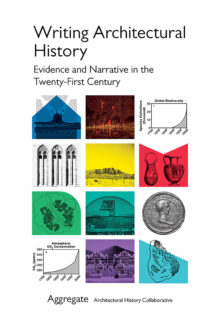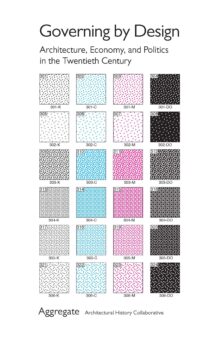
Aggregate Architectural History Collaborative
The Aggregate Architectural History Collaborative is dedicated to advancing research and education in the history and theory of architecture. Since 2006, Aggregate has held dozens of workshops and symposia throughout North America in partnership with major universities, exhibitions, and research centers. Aggregate presents innovative scholarship on its website we-aggregate.org, and in 2012 published the collected volume Governing by Design: Architecture, Economy, and Politics in the Twentieth Century.
Writing Architectural History
Evidence and Narrative in the Twenty-First Century
Over the past two decades, scholarship in architectural history has transformed, moving away from design studio pedagogy and postmodern historicism to draw instead from trends in critical theory focusing on gender, race, the environment, and more recently, global history, connecting to revisionist trends in other fields. With examples across space and time—from medieval European coin trials and eighteenth-century Haitian revolutionary buildings to Weimar German construction firms and present-day African refugee camps—Writing Architectural History considers the impact of these shifting institutional landscapes and disciplinary positionings for architectural history. Contributors reveal how new methodological approaches have developed interdisciplinary research beyond the traditional boundaries of art history departments and architecture schools and explore the challenges and opportunities presented by conventional and unorthodox forms of evidence and narrative, the tools used to write history.
Governing by Design
Architecture, Economy, and Politics in the Twentieth Century
Governing by Design offers a unique perspective on twentieth-century architectural history. It disputes the primacy placed on individuals in the design and planning process and instead looks to the larger influences of politics, culture, economics, and globalization to uncover the roots of how our built environment evolves.
In these chapters, historians offer their analysis on design as a vehicle for power and as a mediator of social currents. Power is defined through a variety of forms: modernization, obsolescence, technology, capital, ergonomics, biopolitics, and others. The chapters explore the diffusion of power through the establishment of norms and networks that frame human conduct, action, identity, and design. They follow design as it functions through the body, in the home, and at the state and international level.
Overall, Aggregate views the intersection of architecture with the human need for what Foucault termed “governmentality”—societal rules, structures, repetition, and protocols—as a way to provide security and tame risk. Here, the conjunction of power and the power of design reinforces governmentality and infuses a sense of social permanence despite the exceedingly fluid nature of societies and the disintegration of cultural memory in the modern era.


